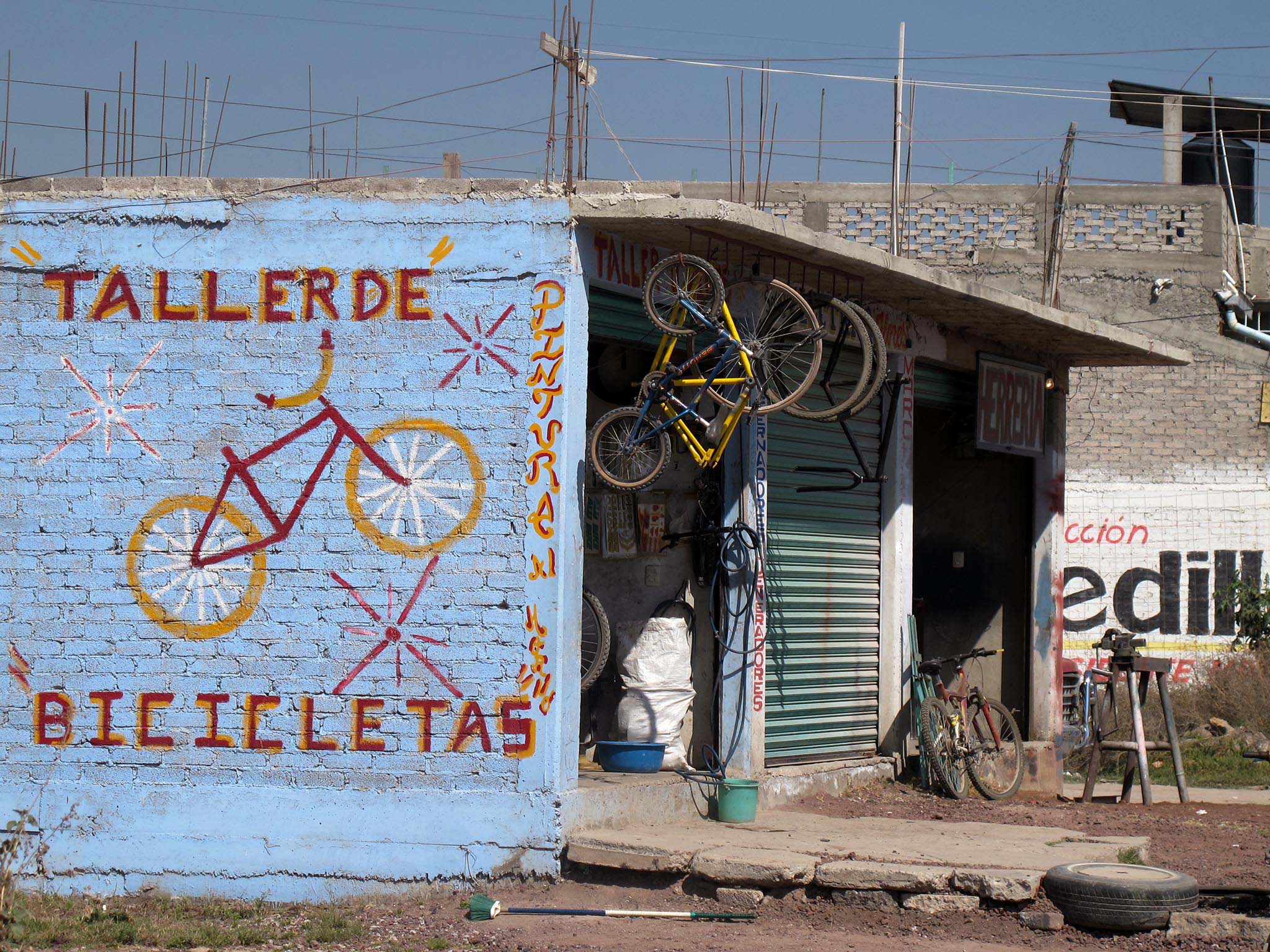I walked among the willow trees and pastures along the edge of Texcoco. It was late afternoon. Along the road ahead of me I saw a lone figure on a horse at a crossroads. As I approached I made out his face; lean, with a grey moustache and a sunburnt face. He was wearing a straw hat and worn denim. And standing alone in this crossroad on the edge of the megalopolis he struck a singular figure, at least an anachronism and perhaps a ghost.
I was taken by the presence of a person on horseback on small plot of land on a street corner. The horse was eating grass and the rider sat easily upon it. He spoke slowly and with great politeness.
His name was Cornelio Cruces. He said that it was difficult to ride a horse in the city. The cars scared the animals and the asphalt wore down the hoofs.
His father had been a well-known local bandit with 18 children, a charismatic outlaw with many women. Cornelio had little of a ferocious father besides perhaps his aptitude with horses. He was quiet and preferred animals to people. A trainer and jockey he raced horses in local contests at village fairs and he was good at it.
Despite the fact that you could make good money racing horses he was poor. He didn’t have his own horses and looked after those of richer men. Racing in the village fairs paid little. He had declined opportunities to train horses in other states and even in the United States. He said horseracing was a dangerous business these days. A great deal of money was bet and many criminals were active in horseracing. He preferred a simple life in Tizayuca to the thrill and dangers of competitive racing on a bigger stage. And the United States? The larger world scared him, he didn’t want to go.
A couple of people passed on the back of a pick-up truck and called out “Corneta”, mocking his name Cornelio. He replied with a stream of invective and apologized to me for his language.

Finally he took off his hat and left me with his blessing. The horse cantered along the asphalt into the city.
I continued through the meadows and streets of the final edge of the city and then continued eastwards though the countryside, making for the musicians of Santa Catarina del Monte in what I thought would be a brief detour. Time somehow seems to disappear once you are out of the city or at least move differently. I could have met Cornelio Cruces four hundred years ago. Perhaps I could have had the same conversation.
After 23 days of continuous walking the rhythm of my footsteps and breath became the measure of my perception. The countryside was beautiful and lush and I passed old ovens for bricks and stalls with cows in them. We imagine the countryside as being less individualistic than the city but in reality in the countryside people have the more marked characters. Something about the slowness of time and scarcity of human presence seems to bring the essence of people to the surface.
I was increasingly aware that the countryside didn’t disappear when the city grew over it. Offices of the village councils still exist. Fields are still found within the city. And over the asphalt rides Cornelio Cruces, master of horses.
